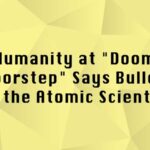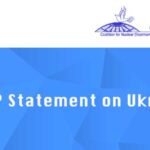The secret military exercises would alter the country’s fate—and lands.
In July of 1945, U.S. President Harry Truman boasted to Soviet leader Joseph Stalin about a novel weapon of unusually destructive force. The next month, the United States dropped two atomic bombs on Japan, instantly killing at least 100,000 people, with many thousands dying in the days after from the injuries. Stalin immediately tasked his government to build a Soviet nuclear weapon to catch up with the American one. The people of Kazakhstan could not have known the extent to which these events would forever change their fate—and their lands.Map of Kazakhstan
The Soviet leaders chose a site in the Semipalatinsk region of the Central Asian republic to test its first atomic bomb. The region held a sacred meaning to Kazakhs. Its steppe, hills, low-range mountains, pine forests, and the Irtysh River created a complex ecosystem, and it gave Kazakhstan many of its most famous writers, poets, and musicians. The thriving merchant town of Semipalatinsk, only 75 miles from the testing site, was home to a multiethnic community of 120,000 people. In 1917, Kazakhstan’s leading intelligentsia established an autonomous government called Alash Orda in Semipalatinsk to gain greater independence from Russia’s growing control of Central Asia. Russian Bolsheviks pushed Alash Orda to surrender within three years, and its leaders were arrested and later executed in the 1930s. Kazakh Steppe, the Semipalatinsk region, 2020. Credit: Togzhan Kassenova
Kazakh Steppe, the Semipalatinsk region, 2020. Credit: Togzhan Kassenova
Neither the region’s historical significance nor concerns about people who lived in the rural settlements and Semipalatinsk crossed the minds of military planners. Local people were kept in the dark about the site’s use. On August 29, 1949, the Soviet Union tested its first atomic bomb. Locals heard a roar, followed by the earth shaking, the walls of clay houses breaking, and windows shattering, as a nuclear mushroom shape filled the skies. A radioactive cloud blanketed the nearby settlements within hours before drifting far from the epicenter.
That was the beginning of more than 450 nuclear tests across forty years in the Kazakh steppe. Victims of Soviet nuclear tests, Semipalatinsk region, circa late 1980s. Credit: Yuri Kuidin.
Victims of Soviet nuclear tests, Semipalatinsk region, circa late 1980s. Credit: Yuri Kuidin.
Local people began to get sick and die young. Women suffered through miscarriages, complicated pregnancies, and stillbirths. Babies were born with missing limbs, Down syndrome, and other disabilities linked to radiation exposure. The number of suicides rose, particularly among adolescents and young people. Doctors were not allowed to diagnose cancers. Rare attempts by local governors to seek help for their region went nowhere. The military denied the tests were harmful to the local population.
The window of opportunity for Kazakh people to act opened in the late 1980s. Under former president Mikhail Gorbachev, the Soviet system allowed some political freedom, while social, economic, and political problems caused it to weaken. Against this backdrop, in 1989, information about radioactive contamination from an underground nuclear test at the Semipalatinsk site became public and caused a nationwide outcry. Kazakhstan’s massive anti-nuclear movement, Nevada-Semipalatinsk, was born. For two years, people rallied against nuclear tests, and the Kazakh government demanded that Moscow end the nuclear tests.


Protest rally near Karaul. Credit: Yuri Kuidin.
CTBTO Preparatory Commission Integrated Field Exercise IFE08 at the Semipalatinsk Polygon, 2008. Credit: CTBTO
Finally, when the turmoil in Moscow reached its peak after a failed coup against Gorbachev, Kazakhstan’s government unilaterally shut down the Semipalatinsk nuclear testing site and banned all tests in its territory. The date was August 29, 1991—exactly forty-two years after the first Soviet atomic test. (I examine this extraordinary move in detail in my book, Atomic Steppe: How Kazakhstan Gave Up the Bomb.)
In the years that followed, Kazakhstan and its international partners, primarily the United States, dismantled the weapons testing infrastructure and secured the remaining vulnerable nuclear material.
The Semipalatinsk nuclear testing site now offers its unique infrastructure to support a global ban on nuclear tests. Kazakhstan has hosted several field experiments to help the Comprehensive Nuclear-Test-Ban Treaty Organization (CTBTO) test its verification regime. In 2008, Kazakhstan hosted CTBTO’s largest on-site simulation exercise, in which forty international inspectors investigated a suspected nuclear test. The Semipalatinsk site offered conditions uniquely close to a real scenario.
Togzhan Kassenova Kassenova is a nonresident fellow in the Nuclear Policy Program at the Carnegie Endowment.


